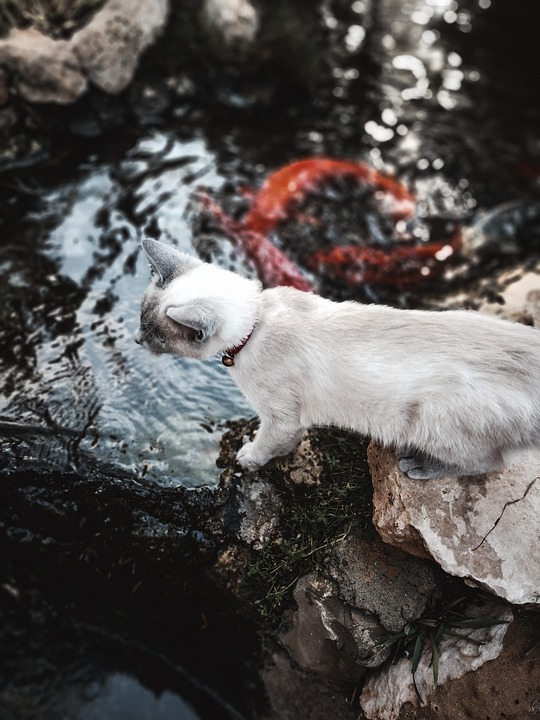Understanding Clamped Fins in Fish: A Comprehensive Guide
Introduction:
Fish health is of utmost importance for any aquarium enthusiast. One common issue that fish owners may encounter is clamped fins. This article aims to provide a comprehensive guide to understanding clamped fins in fish, including their definition, common causes, and ways to prevent and treat the condition.
I. Understanding Clamped Fins:
A. What are Clamped Fins?
Clamped fins refer to a condition where a fish’s fins are held close to its body, appearing tight and pressed against the fish’s sides. This is in contrast to healthy fins that are open, spread out, and display natural movement. Clamped fins can affect various species of fish and can be an indication of underlying health problems.
B. Causes of Clamped Fins:
1. Environmental Factors:
Poor water quality, such as high levels of ammonia, nitrites, or nitrates, can stress fish and lead to clamped fins. Incorrect temperature and pH levels can also disrupt a fish’s well-being. Additionally, inadequate oxygen levels in the aquarium can contribute to the development of clamped fins.
2. Disease and Infections:
Various bacterial, fungal, and parasitic infections can cause clamped fins in fish. Viral diseases can also lead to this condition. Furthermore, nutritional deficiencies can weaken a fish’s immune system, making them more susceptible to infections and clamped fins.
3. Stress and Behavioral Issues:
Stressful environments can trigger clamped fins in fish. Aggressive tankmates, overcrowding, or improper tank setup without hiding spots can cause stress and lead to clamped fins.
C. Symptoms and Effects of Clamped Fins:
Clamped fins can have several visible effects on fish. Reduced mobility and activity are common symptoms, with fish displaying less swimming and movement. Loss of appetite may occur, leading to weight loss and a decline in overall health. Decreased fin movement and display can affect a fish’s ability to communicate or attract mates. Additionally, clamped fins make fish more vulnerable to predators.
II. Preventing and Treating Clamped Fins:
A. Maintaining Optimal Water Conditions:
Regular water testing and maintenance are crucial to ensuring a healthy aquarium environment. Proper filtration and aeration help maintain water quality and oxygen levels. Monitoring and regulating temperature and pH levels are also essential to prevent stress-related issues like clamped fins.
B. Providing a Healthy Diet:
A balanced and varied diet is essential for fish health. Offering high-quality fish food options that meet the nutritional needs of specific species is crucial. Supplementing with vitamins and minerals can also help boost a fish’s immune system and prevent nutritional deficiencies.
C. Minimizing Stress Factors:
Creating a suitable environment for fish is vital to minimize stress. Ensuring an adequately sized tank and controlling population density can reduce aggression and stress levels. Choosing compatible tankmates that do not pose a threat to each other is crucial. Providing hiding spots and suitable tank decor also helps create a stress-free environment.
D. Quarantine and Disease Prevention:
Isolating new fish in a quarantine tank before introducing them to the main aquarium is essential to prevent the spread of diseases. Regular health checks and observation help detect any signs of illness early on. Prompt treatment of illnesses is crucial to prevent them from escalating and causing clamped fins.
III. Frequently Asked Questions (FAQs):
1. Can clamped fins be a sign of a serious health issue?
Clamped fins can be an indication of underlying health problems, some of which can be serious. It is important to monitor fish closely and address any health issues promptly.
2. How long does it take for clamped fins to heal?
The healing time for clamped fins can vary depending on the underlying cause and the fish’s overall health. With proper care and treatment, it can take anywhere from a few days to a few weeks for fins to heal.
3. Can clamped fins be contagious to other fish?
Clamped fins themselves are not contagious; however, the underlying causes, such as infections, can be contagious. It is important to isolate and treat infected fish to prevent the spread of diseases.
4. Should I treat clamped fins with medication?
Medication should only be used if the underlying cause of clamped fins is identified as a disease or infection. Consulting with a veterinarian or fish health specialist is recommended to determine the appropriate treatment.
5. Can clamped fins be reversed with proper care?
With proper care, clamped fins can be reversed. Addressing the underlying cause, providing optimal water conditions, and ensuring a stress-free environment are key to helping fins recover their natural state.
Conclusion:
Understanding clamped fins in fish is crucial for maintaining their overall health and well-being. By recognizing the causes, symptoms, and effects of clamped fins, fish owners can take proactive steps to prevent this condition. Early detection and treatment are essential for ensuring a happy and thriving aquarium environment.









